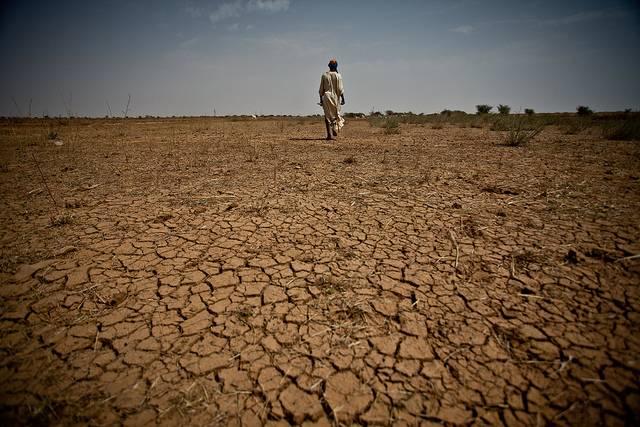
You may have heard that U.S. Vice President Mike Pence spoke at the Munich Security Conference over the weekend to assure allies they have nothing to worry about when it comes to aggression from Russia or President Donald Trump’s rhetoric.
What was not widely reported in the media, with the exception of Bloomberg and a few other sources, is the growing concern that climate change risks could escalate social conflicts around the globe.
Patricia Espinosa Cantellano, head of the United Nations’ climate change agency, said 200 million people worldwide were displaced due to natural disasters between 2008 and 2015. Such risks have doubled since 1970. And in addition to the human misery, the financial costs of disasters related to climate volatility have soared to about US$200 million a year.
“Climate change is a driving force behind the instability that causes displacement,” Ms. Espinosa Cantellano said during a panel discussion on climate security in Munich on Saturday.“Climate change is the threat multiplier that worsens social, economic and environmental pressures leading to social upheaval, and possibly even violent conflict.”
According to a report commissioned by G-7 nations last year, the growing demand for food, water, and energy is hampering the work being done to alleviate poverty and boost economic development in developing countries.
Add the impacts of unresponsive or incompetent governments, rising inequality and political upheaval, and one outcome is an increase in human migration. Extreme weather, which leads to volatile food and energy prices, could foment even more social unrest.
Furthermore, the competition for water resources, especially along transnational borders, could cause further tension during this century. Sea-level rise could also spark conflict over ocean resources and shipping lanes.
The attempted solutions seem obvious: climate mitigation strategies and humanitarian aid paired with sustainable economic development programs. But the G-7 survey also suggests more peace-building and conflict-prevention programs. One problem is that, with all the discussion over how to plan for a warming climate while ensuring that poorer countries can still build their economies, there is still a disconnect between peace-building and accounting for environmental risks.
The authors of the G-7 report suggested a framework such as the New Deal for Engagement in Fragile States, which strives to partner wealthier nations with developing countries to strengthen national security, political participation, social services, revenue collection and economic development.
What this 'New Deal' lacks, however, is the integration of environmental and climate risks and how they affect government policies, a country’s business climate and, of course, citizens.
Climate change aid programs such as the one recently announced by Sweden could help build resilience where the need is greatest, but funds are sorely lacking.
In a world that struggles with a bevy of crises, from poverty to corruption to human rights violations, the integration of environmental stewardship and climate change risks sounds like an overwhelming and complicated task. But as Bloomberg’s Eric Roston wrote last summer, “The question is no longer just whether climate change will kill us, but also whether climate change will make us kill each other.”
If climate change cannot be pinned down as the definitive cause of global conflict yet, there is definitely a correlation: A recent study led by German researchers suggested that almost a quarter of wars in ethnically-divided nations sparked around or during a climate-related natural disaster. And in a 30-year period from 1980 to 2010, 9 percent of all armed conflicts worldwide occurred during a heat wave or drought.
None of this may be news: A 2013 study led by the University of California, Berkeley and Princeton University suggests that links to a changing climate and wars are nothing new in human history, from Europe to Asia to Mesoamerica.
Image credit: Oxfam International/Flickr

Leon Kaye has written for 3p since 2010 and become executive editor in 2018. His previous work includes writing for the Guardian as well as other online and print publications. In addition, he's worked in sales executive roles within technology and financial research companies, as well as for a public relations firm, for which he consulted with one of the globe’s leading sustainability initiatives. Currently living in Central California, he’s traveled to 70-plus countries and has lived and worked in South Korea, the United Arab Emirates and Uruguay.
Leon’s an alum of Fresno State, the University of Maryland, Baltimore County and the University of Southern California's Marshall Business School. He enjoys traveling abroad as well as exploring California’s Central Coast and the Sierra Nevadas.














